A good portable Raman spectrometer bridges the gap in capability, performance, and size between benchtop and handheld Raman spectroscopy. It allows new point-of-use applications in industry and medicine by delivering high-sensitivity and dependable results in an economical and compact footprint.
These advantages are important to OEM instrument developers and researchers, especially for applied research and commercialization of novel technologies.
Environmental monitoring, medical diagnostics, and quality and process control in the food chain, manufacturing, and energy industries are all beginning to adopt portable Raman spectrometers to deliver sensitive and specific results.
Additionally, Raman is being employed as a complementary diagnostic within other systems, including high-end research tools, surgical instruments, and machine inspection.
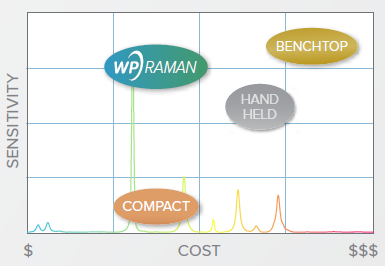
Image Credit: Wasatch Photonics, Inc.
Wasatch Photonics wants to use the full power and potential of Raman to save lives, keep families safe, protect the environment, and improve the planet.
The company wants ‘next generation’ to happen within our generation, by offering a range of world-class portable Raman spectrometers that enable research to become a reality. Wasatch Photonics’ spectrometers have higher throughput and are more sensitive to provide users with improved spectra in less time.
The company’s products are sufficiently robust and reproducible to deliver reliable answers in the laboratory, field, or hospital.
Wasatch Photonics offers more configurations than any other provider of Raman spectrometers, as well as the expertise and experience to help you find the right fit. Its products are supported by Raman-specific software tools with full data transparency to provide full control over data analysis.
Benchtop vs Portable vs Handheld Raman – What is the Difference?
Benchtop Raman systems are designed to be used in a laboratory to integrate complex optical interfaces for sample positioning and/or imaging, high-end detectors, and multiple excitation wavelengths to maximize flexibility for research.
They are equipped with sophisticated software that offers automated signal acquisition and processing but can block the user’s access to the raw data or their ability to write custom software. They are large, heavy, and expensive, limiting their use for research.
Portable Raman spectrometers (also referred to as ‘compact’ Raman spectrometers) enable the user to streamline and configure a Raman system to their specific application – minimizing weight, size, cost, and complexity.
If they are developed with an integrated excitation laser, they can be small yet sufficiently robust to be easily moved between locations. They can also be powerful enough to be employed for many research projects. They offer options for sample interface, excitation wavelength, and level of integration.
They are operated using a laptop or tablet, with software provided for collecting and processing data. A portable Raman spectrometer is an ideal solution for applied research and measurements in the field, as well as for integration into larger, application-specific instruments for OEM use.
Handheld Raman instruments are developed to be used in the field by non-experts to definitively identify a substance upon point-and-click operation.
They employ a single wavelength Raman system with sampling optics, data processing, and a display screen or user interface. They are lightweight and battery-operated while being robust enough to be used by first responders as well as in manufacturing environments.
They provide rapid and reliable results but are often limited to the installed libraries. Handheld Raman instruments rarely provide access to raw data, and configurability is limited to the supplied sampling accessories.
Higher Throughput, More Signal, and Faster Measurements
Raman is a low-light technique, making every photon precious. A general-purpose compact spectrometer may not have the required sensitivity to capture enough Raman signal without also capturing excess background noise.
The perfect portable Raman spectrometer collects more light, keeps more light, and detects more light. Wasatch Photonics develops its portable Raman spectrometers for maximum sensitivity, collecting more signal from weak Raman emitters than other spectrometers.
Due to higher signal and cleaner spectra, even low concentrations can be measured. The Raman spectrometers from Wasatch Photonics use a low f/# (high NA) input to maximize light collection.
The instruments utilize patented VPH transmission gratings for maximum diffraction efficiency at all wavelengths, as well as custom optics to realize diffraction-limited optical design.
This combination results in a superior, high throughput optical bench for low light-level applications, which can be matched to the best detectors for each application. This enables the collection of more Raman signal in less time to deliver lower limits of detection, better signal-to-noise, and quicker back-to-back measurements.
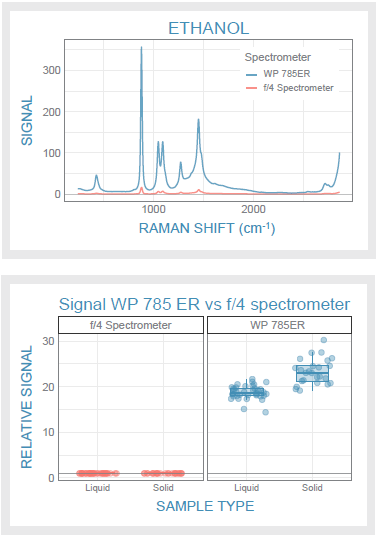
Image Credit: Wasatch Photonics, Inc.
Robust Design and Reproducible Measurements
A portable Raman spectrometer must provide reliable performance for a range of different use-case environments, delivering consistent spectral data independent of movement and temperature changes.
Wasatch Photonics utilizes a transmission-based optical design to reduce wavelength drift and peak distortion with temperature. The company also conducts vibration and shock testing to guarantee the mechanical robustness of its designs.
Analyzing Raman spectra usually involves the use of chemometric models or matching to a library. This makes low unit-to-unit variability important, particularly for OEMs.
Wasatch Photonics offers high unit-to-unit consistency and is committed to providing the appropriate wavenumber, wavelength, and spectral response calibrations and standards to guarantee rock-solid spectra.
This enables users of its instruments to achieve over 99.5% unit-to-unit spectral agreement, as displayed by the spectra from seven distinct spectrometers overlaid below.
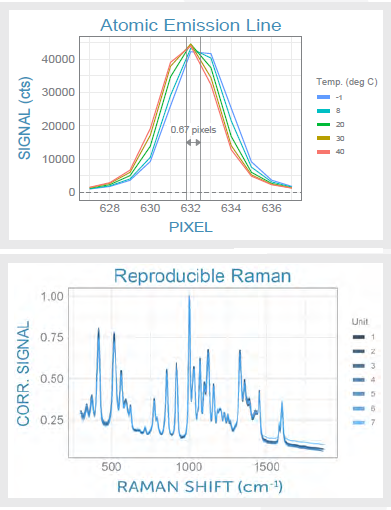
Image Credit: Wasatch Photonics, Inc.
More Wavelengths, Sample Coupling, and OEM Options
A compact footprint should not translate to limited options. The configuration of a portable Raman spectrometer affects the quality and strength of its spectra, as well as its practical fit for each application.
There are many factors and options to consider, including the following:
- Integrated laser: A built-in excitation laser can preserve the flexibility of a modular system and reduce cost, or for the greatest signal in the most compact footprint, use a fully integrated system.
- Excitation wavelength: There should be a balance between signal strength and background fluorescence.
- Choice of detector and cooling level: This is a compromise between dark noise, cost, and power draw/size that relies on signal level, as well as how and where the instrument will be utilized.
- Spectral range: The fingerprint region for identification (less than 1800 cm-1) or the extended functional range for maximum information (less than 3600 cm-1)
- Sample coupling: Is the sample a liquid or a solid? Is a fiber optic Raman probe required to reach the sample?
- OEM options: The availability of a streamlined, equivalent model for integrating into an application-specific instrument is vital for OEMs and researchers for the development of a new product.
Wasatch Photonics understands the influence and interactions of these factors and can provide advice on the best match for your application.
This is why the company’s range of portable Raman spectrometers includes configuration options from 248-1064 nm with a selection of detectors to suit research and OEM applications.
All instruments are equipped with Wasatch’s signature high sensitivity and speed to help users obtain the best possible data in the correct form factor for their application.
This also makes it easy for customers to source multiple Raman needs from one supplier, saving time and effort. Wasatch Photonics can provide the consistency required to easily transfer your software, analysis methods, and learnings from one project to the next.
Consistency is imperative during the development of a new Raman-based instrument. Instrument developers are often required to conduct initial proof-of-concept testing on a benchtop instrument and then repeat this using a more compact OEM spectrometer.
However, the high sensitivity of Wasatch Photonics’ portable Raman spectrometer range enables you to perform R&D using a compact benchtop unit for the laboratory and then quickly and easily migrate to the equivalent OEM module for prototyping and production.
This is termed ‘OEM by design’ philosophy. Employing the same optical design throughout guarantees consistent performance from R&D to launch, which also reduces your risk and accelerates the development of your product.
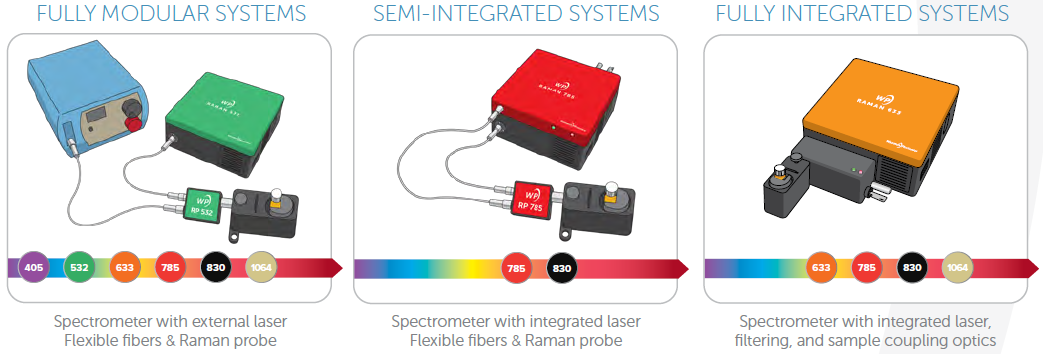
Image Credit: Wasatch Photonics, Inc.
Ease of Use, Intuitive and Powerful Software, and a Simple Setup
Good products are easy to use, and a portable Raman spectrometer should be no different. Spectrometers should be equipped with Raman-specific software at no additional cost, with an intuitive user interface that provides an easy setup.
Software development kits (SDKs) that are available in a range of programming languages increase compatibility with other systems, a user’s existing software stack, as well as the team’s personal programming preferences. This allows the automation of data acquisition and accelerating instrument development.
The ability to develop plug-ins that are compatible with existing GUI can simplify data analysis and automate application-specific answers. Wasatch Photonics believes that software should provide the freedom to collect and analyze data in the way that works best for you.
Wasatch Photonics’ ENLIGHTEN™ spectroscopy software and SDKs were created by experienced Raman spectroscopists alongside research and OEM customers.
It provides the features required for Raman, such as control of onboard laser power and detector/measurement parameters, as well as corrections for spectral response, laser wavelength, and thermal drift using known standards.
This enables users to begin each day with the same acquisition parameters, run multiple units, save and recall spectra for later analysis or export, and easily collect sequential spectra.
Additionally, the software offers embedded Raman library matching powered by Wiley’s KnowItAll spectral identification engine. It is equipped with the pre-processing steps required to improve matching accuracy.
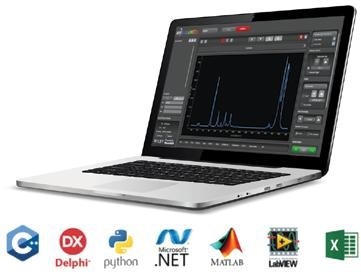
Image Credit: Wasatch Photonics, Inc.
Access to Raw Data and All Data Analysis Steps
A portable Raman spectrometer should offer full access to unprocessed data. Many spectrometer manufacturers conduct pre-processing to some extent, which may be automatic in benchtop spectrometers.
While this is convenient for some applications, it may limit your ability to understand, control, and modify spectral pre-processing and subsequent analysis. The VPH gratings used in Wasatch’s Raman spectrometers are transparent, and the company believes that data collection and processing should be the same.
Wasatch provides full data transparency, offering access to the raw spectrum collected in a range of file formats, in addition to all subsequent correction and processing steps.
The ENLIGHTEN™ software and SDKs are open source, allowing you to see, adapt, and customize every step of data processing at the source code level to develop custom algorithms and software accustomed to your specific requirements.
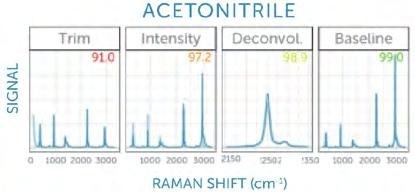
Image Credit: Wasatch Photonics, Inc.
Why Choose Wasatch Photonics?
Wasatch Photonics designs and manufactures products specifically for Raman spectroscopy to provide more ease of performing research and superior Raman-based product development.
The company has collaborated with researchers and OEM instrument developers to understand its customer’s unique requirements and to develop the best possible products.
Wasatch understands what makes a great Raman spectrum, as well as the optical design required to provide superior performance in a compact, economical footprint. It is the company’s goal to bring Raman spectroscopy to life.
Wasatch Photonics believes that science has the power to create change and improve lives, and it wants to support you to make this possible.

This information has been sourced, reviewed and adapted from materials provided by Wasatch Photonics, Inc.
For more information on this source, please visit Wasatch Photonics, Inc.